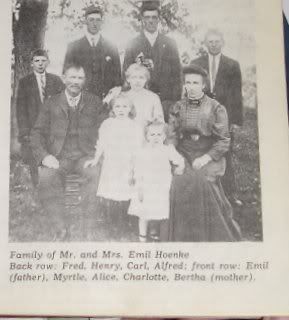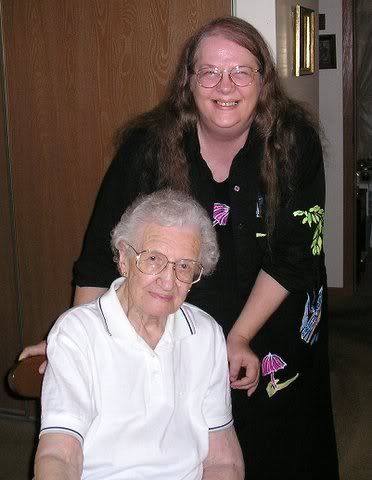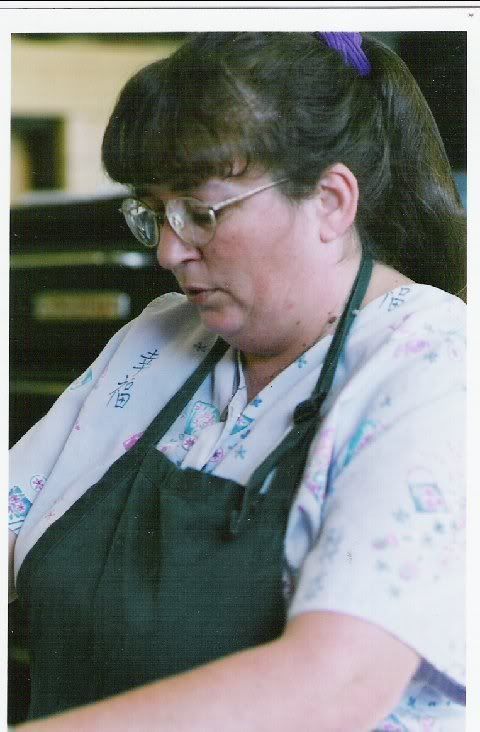First post of the day - Mostly finished version of assignment on bystander affect ...
We’ve been up for a while. It’s about 4 am now. We’ve been doing some organizing. We put all of our quarters papers over to the Masters’ Blog … Sorry someone … Please don’t feel you have to read all of them. I felt like in general we were just tidying up … I’d like to get into our next paper sooner than later. I wanted though to comment on our obsession. We viewed our son’s videos, particularly the opera one, over and over again. That is never a real good thing. I think in general we were coming to terms with the point that he is doing what he is doing. We are real real proud of him, but it is something far-fetched from our view of coddling him, which we can’t do and practically – haven’t done for quite some time, but there are lingering feelings of being a mother and that means you want to keep your baby safe.
I trust my son’s sensei and I trust my son. I think part of putting it to music – opera especially was that I wanted to see it more as an art form than just “somebody wants to hurt our son.” I had a very strong feeling making the video and then watching it countlessly afterward that it had been etched in a long, long tradition of people from Eastern and Western civilizations battling. That my son wants to take part of this march or cadence, I can only say God Bless.
Ack … we got distracted again and lost more time to absorption in things of the past. We keep going over our son’s videos and then too we find ourselves going over now to the Masters’ work that we’ve updated. At least that is getting us back on track with being here … and that hopefully is one step closer to being “at school.”
The time is now almost 5 am.
We just stretched for another cup of coffee. I wanted to say one more thing before going back into it. I wanted to say thanks to Deb for spending so much time with us yesterday as we struggled through getting the opera version of Joe’s match uploaded to where it needed to be. I was having trouble with Hipcast, AOL, and YouTube. FINALLY, YouTube came through. It had been a very long uploading process though – the part where it transcodes. Don’t know what was going on there. As soon as that happened though it was a matter of minutes getting it over to Blogger.
There is still some frustration in that I can’t hear the videos on the detached YouTube screens, but at least I know others can. We spent good time trying to figure that out as well yesterday, but to no luck. There was some garble out there, but way, way to advanced for us. I can stumble through most codes, but I didn’t even know the field they were talking about. It looked like some version of DOS, but I think obviously one of the newer languages. Eh. We’ll look again another day when patience prevails. Ok, now … now avoidance this morning – lets go check out school! Well no, we don’t have to go in … have the information saved all over the place. Why don’t we start then by getting our screens set-up.

Begin Paper ...
Topic: u05d1 Bystander Help Date: February 19, 2007 7:04 AM
Subject: In response to the assignment from Ann
Author: Garvey, Ann
Last edited on: February 19, 2007 7:27 AM
In consideration of factors that might determine whether bystanders offer help, we note that Brehm, Kassin, & Fein (2005) offer many solutions. We will work through each in turn, but first we chose to list fairly directly from the authors.
A person might help another more by the factors of:
a. Being a genetic relative (p. 353)
b. Having had cooperative breeding (p. 353)
c. Having a situation that is life and death (p. 354)
d. Seeing the person as younger (p. 354)
e. Helping someone else who is likely to help back (p. 354)
f. Not being selfish (p. 355)
g. Preserving the norm to help (p. 356)
h. The other being injured or sick (p. 356)
i. An external threat – such as a tsunami (p. 356)
j. Being rewarded where the cost is not too high (p. 356)
k. Needing to feel good (self-esteem) is threatened (p. 357)
l. Releasing depression (p. 358)
m. Being the morally right thing to do (p. 358)
n. Needing to present the image of being moral (p. 358)
o. The individual’s hero concepts (p. 359)
Fein & Kassin (2005, p. 147) contribute to this assignment a study completed by Latane and Darley (1968), which concluded that subjects were most unlikely (10%) to report the incident of smoke if they were with others who were passive and disregarding of the smoke, mid-likely (38%) while in small groups of three, and most likely (75%) to report the smoke if they were alone. In this study where we are looking for determining factors of help in emergency there didn’t appear to be any genetic relatives. It wasn’t established whether or not cooperative breeding was in affect with the subjects. This may have been mitigated by assessing the subjects for service orientation such as scouting, clubs, or other various social committments.
The discussion considers whether or not the subjects thought smoke entering the room through a vent was a real life emergency – most do not consider it life or death, though some had to wave the smoke away to complete their paperwork. There was no victim to consider as to being younger or helping back. The selfish motive is more difficult to assert, but there is a good chance that the subjects particularly in the “alone” category felt some need to preserve the helping norm, which was held off or diffused when more subjects were added to the experiment. This study does not present anyone being hurt or sick, but it does question an external threat of fire, though again subjects debriefed afterward thought that the smoke was something other than by a fire.
The test was not refined enough to establish motive other than by some elimination of determining factors that could not be an affect. Motives that could be considered are that the subjects thought they might be rewarded for a relatively low cost of standing up and giving information to the information desk, possibly feeling good about the act of reporting, elevating a mood (depression), being morally adept (or at least portraying that affect), or presenting self as a hero. Though again It might be hard to establish that the smoking situation was urgent, stress-provoking, or fearful.
The experimenters had hypothesized that due to diffusion of responsibility that subjects were “less likely to engage in socially responsible action if they think other bystanders were present” (Fein & Kassin, 2005, p. 153). In another study by Schwartz and Gottlieb (1976, p. 1189) experimenters note that the Latane and Darly’s subjects thought the other bystanders aware of their responses, so possibly the affect of the subjects was to assist them in presenting the image of “being moral” due to the stance of being called on by social norm to get help after noticing the smoke. They tested three conditions whereas the responsibility would be diffused – help less because there were others present, negative social influence – help less due to another bystanders unresponsiveness, or evaluation apprehension – help more when they know the other is aware of their response (1976, p. 1190).
Schwartz and Gottlieb’s results showed their hypothesis tested out. They had also held in consideration the Kitty Genovese study and thought that a better scheme was to directly test a scenario of violent crime with Israeli males. They asserted “Intervention in violent crime is likely to be viewed as more dangerous, especially when the attacker is still present, when expected and unpredictable involvement with authorities (e.g., police, courts) is possible, or when fear of becoming the next victim may induce particularly strong emotional stress, and when violence-precipitated need may be perceived as especially vivid or immediate" (p. 1188). Their expectation for the third affect was due to an assumption that bystanders “project an expectation” on to each other to do the right thing, which is a counter-argument supported by their conclusion to the theory of diffusion (p. 1189).
Latane and Darly’s (as cited in Fein & Kassin, 2005, p. 152) study stated that three elements had to occur before subjects would act in an emergency. First, they had to notice the event, second, they had to interpret it as an emergency, and third they had to assume responsibility. Most of the subjects had noted the event, but clearly did not perceive the situation to be an emergency. Ironically, there was another experiment by Macpherson & Robers (2006, p. 113) where the test subjects were various canines, and the dog’s owners acted out two victim scenarios; whereas the first they had had a heart attack (gave the dog no cues) and the second they had been trapped under fallen bookshelves (given the dog cues to go for help). The results were that in none of these opportunities did the dog go to the stooge for help. Again, we don’t know if the condition of interpretation of an emergency was met.
One additional study sought to find if there were gender differences that might play into effect in an emergency situation where the victim was choking. The Latane and Darly’s subjects were all male. Senneker and Hendrick (1983, p. 916) studied subjects who by test were rated as males – masculine, males/females – androgynous, or female – feminine. As might be expected masculine subjects were most likely to help, and then androgynous, and then feminine though they found that instrumental ability (knowledge of Heimlich maneuver) was a significant factor (p. 924). It was interesting though to note the possibility that the more masculine subjects might have learned the maneuver prior to this occasion of preparedness opportunity.
It may have been a testing omission due to the age of some of these above tests, but I find it interesting that none of the tests go further in establishing motives if by no other means than having surveyed subjects in the debriefing to establish motive for responding as they had. In order of increasing the likelihood of people being more helpful, it might be helpful to work down the previous list and experiments noted. For the test situation with the smoke, it may have been helpful for example, to have someone fall outside the testing room indicating that the smoke was having a dire affect on someone, which would reserve the factor of someone being sick or injured. Another trial series of experiments could be done offering contrasting videos planting in the subjects' mind the social norms or other emotional cues such as guilt, negativity, pride, or heroism. In the situation of choking, factors that might increase the likihood of people being more helpful would have been if the victim was a younger person or perhaps the cook in that the cook might return a favor of an immediate good will of a food reward. In the situation with the dogs, perhaps there should have been a testing scenario of dogs or other animals who had been trained as service support animals.
References
Brehm, S. S., Kassin, S., & Fein, S., (2005). Social psychology [6th ed.]. Boston: Houghton Mifflin Company.
Fein, S. & Kassin, S. (2005). Readings in social psychology: The art and science of research [3rd ed.]. Boston: Houghton Mifflin Company.
Macpherson, K. & Roberts, W. A. (2006). Do dogs (canis familiaris) seek help in an emergency? Journal of Comparative Psychology, 120(2), 113-119. Retrieved February 18, 2007, from PsycARTICLES data base.
Schwartz, S. H. & Gottlieb, A. (1976). Bystander reactions to violent theft: Crime in Jerusalem. Journal of personality and Social Psychology, 34(6), 1188-1199. Retrieved February 18, 2007, from PsycARTICLES data base.
Senneker, P. & Hendrick, C. (1983). Androgyny and helping behavior. Journal of Personality and social psychology, 45(4), 916-925. Retrieved February 18, 2007, from PsycArticles data base.
End Paper ...
to be continued in the next post...
















